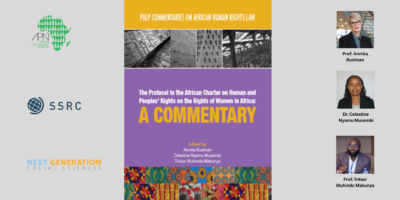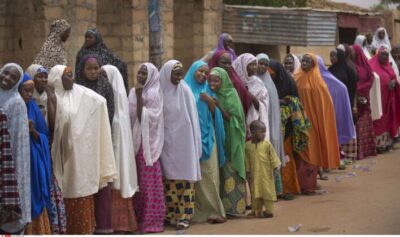Lata Mani has been an intellectual hero of mine since before I became an editor at Duke University Press. I had attended the pathbreaking “Marxism and the Interpretation of Culture” conference at University of Illinois in the early 1980s and returned there for its successor “Cultural Studies” in 1990, which is when I heard Lata Mani give a version of what became part of her brilliant University of California Press book, Contentious Traditions: The Debate on Sati in Colonial India. Her way of bringing feminist thought to colonial history opened to new ways of thinking and seeing. The book is still in print, and the blurbs from Lisa Lowe, Ranjanit Guha, and Dipesh Chakrabarty calling it a landmark ring true even twenty-five years later.
Once I became an editor and had the chance to talk and work with Lata, I saw that her politics, her critical insight, and her generous and deep way of being in the world were all inseparable. At one point, after she and her late partner Ruth Frankenberg had moved from California to Bangalore, we discussed working together on one of Lata’s first books of healing and spiritual teachings. Despite trying to imagine a way we could publish it at Duke, I wasn’t sure it would work for us at the Press. Lata and Ruth were kind about my decision, but subsequently I regretted passing on what became an influential book, one that was ahead of its time.
All to say I was thrilled when Lata, now back in California, approached me about Myriad Intimacies. The book combines the spiritual and critical, grounded politics of the present with the long-term politics of nature and colonialism. The form was experimental, moving through creative and critical modes, but in a way that flowed easily. The Press had recently published creative critical work by Alexis Pauline Gumbs, Fred Moten, and Christina Sharpe, so Myriad Intimacies felt fully on time stylistically as well as politically. Lata’s approach to critical and spiritual healing was entirely needed for the pandemic and for Trump-era violence; I was excited to move ahead.
One of the features of the book that Lata and I discussed was a set of short videos. She had produced them in collaboration with Nicolás Grandi, a Buenos Aires-based filmmaker, researcher, and transdisciplinary artist. Lata wanted to include them in the book. As a publisher who still thinks about the paper version first, I wondered if we might simply have a link to Lata’s website instead. Readers could find the videos there, watch them, and then return to the book. That was a solution that we have used many times for supplementary digital materials that accompany a book. But Lata felt it was important for the films to be cued in the text, exactly where they belonged, unlike the usual website with links to YouTube videos or offering supplemental maps or photos.
I knew it would be a challenge to include the films in the book, since—as anyone who has tried watching a video from the aughts knows—digital standards change over time. When a press publishes a book, libraries need to be assured that the materials they are purchasing are available in perpetuity. When they add a digital book or a journal issue to their collection, they expect future patrons to be able to read them, as one could currently read printed books published a century or two ago. While as individual purchasers we are more used to media no longer being accessible, whether a manuscript on floppy disc or a VHS video we can no longer play, it is libraries that set the standards for university press publications.
Digital elements that are part of a book must thus be housed somewhere where they will be tended and updated, somewhere where those elements will be available in perpetuity. Usually, we send authors to the library at their institution to host such materials. Libraries understand the need and the challenge and are usually happy to support scholars at their university. In this case, Lata had been an independent scholar for decades. There was no university to go to. She has a superb website, but who would be updating it twenty or eighty years from now? The video materials for the book were short. I thought perhaps the Press could make an exception and find a way to host the materials.
Incorporating video materials in the text itself turned out to be a bigger challenge than I could have imagined. The division of work at university presses meant that I was asking my design and production colleagues to work with our technology group to find a solution to the hosting problem and to figure out how to signal the films to readers. I had no idea how many issues this would entail. They came up with a place to house the videos and a method for using QR codes to move the reader to the films, but it was far from a simple process. I thought it would be helpful to summarize those challenges here.
For this essay, I asked Amy Ruth Buchanan, our Editorial, Design, and Production Director, for a recap. She sent me a list of twenty-one questions, and an additional five or six overarching issues that governed the choices they made. The questions ranged from who would be able to access the videos—should they be behind a paywall?—to who will create the QR codes and who will test them. They wondered about alt text or closed captioning and about how to keep the reader experience in the book rather than moving out to wherever the videos were hosted. Our customer service people wondered who readers would contact if they had difficulty reaching or watching the videos. Our books all appear in print, in e-pub formats, and as PDFs. What system would work for all three formats, without having to produce three separate book files? In an e-pub format, would there still be QR codes, or could a halftone be clickable to a hyperlink?
The steps of production that form the basis of standard publishing schedules, from copyediting to proofs to the printer, needed additional pauses while each new question was addressed. Even once the book was successfully published, my colleagues worried about longevity and stability, asking what would happen if the site housing the videos went under, and the DOIs had to be rerouted to a new hosting location.
What I had imagined as a relatively straightforward solution was nothing but. Of course, some of these issues were the kind that one figures out once and then incorporates as standard procedures. Others are peculiar to a project or solve situations that will shift as digital and print possibilities do.
Organizationally, there is another kind of cost with experimental publishing projects. We publish one hundred and fifty books a year, a number that depends on all the project editors and designers being able to move books through production. I often contrast that process, where keeping all of the trains on time is a priority, with a museum producing a catalog—all hands on deck for one or two big projects at a time, whatever it takes. With an artisanal process like a museum catalog, one expects unusual elements. In a university press moving many books along at once, complex projects can weigh down the system.
Happily, in this case, the response to Lata’s book has justified the effort. It was published with wonderful acclaim from feminist heroes M. Jacqui Alexander and Chandra Mohanty. There was a fabulous panel on the book at the American Anthropological Association in 2022, with Donna Haraway, Arjun Appadurai, Miriam Ticktin, Akhil Gupta, and others. It received exquisite reviews.
In fact, the ideas of the book are not only in tune with the complexity of the process, they depend on it. They are also very much located in the conversations that animate The Immanent Frame.
Lata calls the book an offering, acknowledging the spiritual connotations of the word, and signals at the start how the book mixes what is too often separated into secular and religious. The multiple genres are there to open our thinking. She compares transmedia and multimedia approaches to older forms of Hindu-Buddhist thought, with many entries and pathways to suit each person, in what Lata calls “a plethora of stories, a proliferation of metaphors.” These are multiple paths, so each reader can find their way as they go.
Lata planned the text and video to reflect her tantric, multiple, relational view of nature. With this approach, she takes on some of the biggest questions of our time. Are we doing enough to fight injustice? How do we escape from repeating binaries of otherness? How do we fully see ourselves as part of the world we are attempting to understand? She works to move us from a model of cause and effect—what should we do?—to a model of multiply interdependent co-arising, a different sense of our universe and our place in it. Her readers will take away her beautiful and brilliant guidance and thinking. The form will get them there.
This book is what we need now. This is a horrible time in many ways. On our publishing lists, we can see that people are reading not just what they need for their PhD examinations. They are reading the books they need for life, whether they are readers within or outside of the academy. For years following the publication of Sara Ahmed’s Living a Feminist Life, there were grateful tweets from readers saying how the book was getting them through the week. Achille Mbembe’s Necropolitics is written up in Teen Vogue. Lata’s work is of and for this moment and Myriad Intimacies is a capacious gift. Is a book the best container for this kind of genre experiment? In the future, I will have an expanded sense of the complexities and a better sense of the possibilities. In the present, I could not be more grateful for the extraordinary lessons of Myriad Intimacies.











